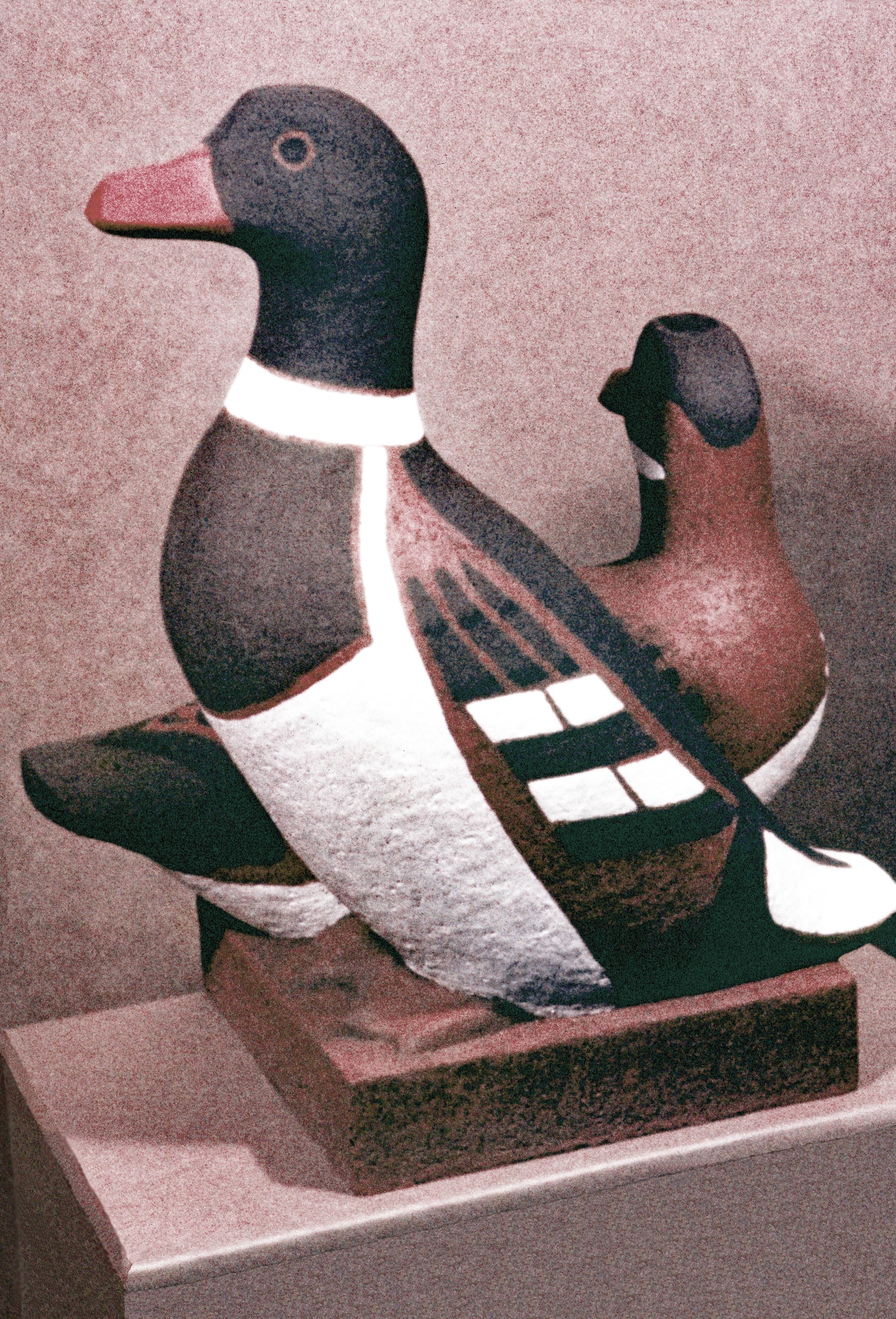CLEO HARTWIG
Born in Webberville, Michigan, but working everywhere from New York City to Mexico, Cleo Hartwig was an award winning sculptor working in a variety of mediums from clay to stone. Hartwig was known for her work as a direct carver (taille direct), a tradition of sculpture where the artist carves directly into the materials. Cleo Hartwig’s works can be found in museum collections nationwide, including the Montclair Art Museum, the Smithsonian, and the Chrysler Museum.
Growing up in a rural countryside, Hartwig found inspiration in the plant and animal life around her, inspiration that stayed with her throughout her career. It’s no surprise that when tasked with making work for the United States that echoed both Americana and The Sea, Hartwig drew from her already established oeuvre of subjects: birds. Different from her sleek and simple “Doves” Hartwig's Terra Cotta Pair of Ducks and Wild Ducks: Mother and Young seamlessly blended the folksy and traditional representation often associated with Americana with aquatic elements, meant to evoke the sea.
Cabin Class Smoking Room, Hartwig’s ducks sat above the semi-circular benches. Image courtesy of the Mark B. Perry Collection.
While not much is known about how Hartwig got the commission for the SS United States, her friendship with Gwen Lux, involvement in prominent arts organizations such as the National Association of Women Artists, and her extremely accomplished career as an artist made her a prime choice to represent the United States in the arts.
Hartwig’s Pair of Ducks and Wild Ducks: Mother and Young, were found in the Cabin Class Smoking Lounge, but were not the only ducks found on board! In fact, the most luxurious of the 14 first class suites on board was often called the “Duck Suite,” for Constance Smith’s murals of wild ducks. The motif of ducks, especially among artists working within an Americana style, was more popular at the time than one might believe. With roots in John James Audubon’s Birds of America, a 19th century work which functioned as both a scientific and artistic exploration of American wildlife, ducks and other migratory waterfowl became an established subject in American visual culture. At the time of Hartwig’s commission of these pieces in 1950, Franklin D. Roosevelt’s Migratory Bird Hunting Stamp Act was in its 16th year of operation. This act, often referred to as the Federal Duck Stamp Act, signed into law that all bird hunters must purchase a Duck Stamp annually, the proceeds of which would go towards purchasing and conserving waterfowl habitat that had been impacted by the dust bowl during the Great Depression.
This act not only became one of the most popular and successful conservation efforts ever launched, but it also worked to establish a visual language among the American public. The Duck Stamp act subsequently created a similarly popular competition that called for artists to design the annual stamps, a competition which continues to this day. The year before the first known discussion of Hartwigs commision, in 1949, the Duck Stamp Act had seen it’s highest yield yet, with 2,127,598 stamps sold at $2 a piece. In 1952, the year of launching the SS United States, the nation set yet another record, selling 2,167,767 duck stamps worth approximately $4.3 million dollars at the time ($45.6 million dollars in today’s money). Smith’s and Hartwig’s Ducks, whether it was intentional or not, presented passengers with distinctly American visual culture on board the SS United States.



